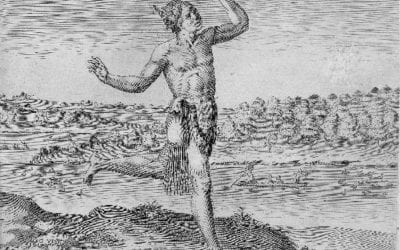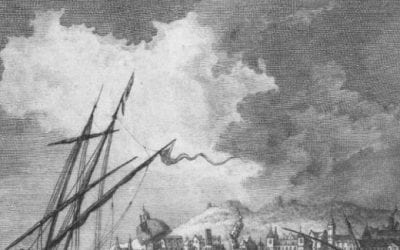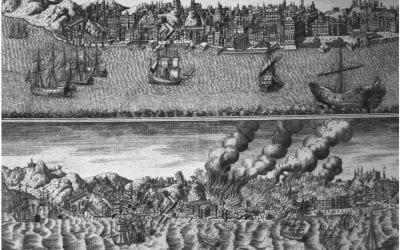El Niño, Catastrophism and Culture Change in America
By now, you’ve read essays in this ReVista that mostly span from colonial times to the recent death of Pinochet. There’s also an occasional mention of indigenous belief systems.
After having explored Harvard’s research on natural disasters for a while, I was confident that I’d ferreted out an inclusive range of multidisciplinary subjects on the theme. it was much to my surprise, when i went to pick up some images for this issue at the office of Tom Cummins, Dumbarton Oaks Professor of Pre-Columbian and Colonial Art History, that he asked, “what are you including on the conference at dumbarton oaks?” It was a lacuna in ReVista, and it was two days before deadline. On the internet, I found a record of the fascinat- ing October 2002 Pre-Columbian symposium. According to the website, the conference proposed to use the El Niño phenomenon, “one of the best studied agents of drastic environmental change” as a way of exploring how past cultures and their transformations are understood and explained.
The symposium, organized by Daniel H. Sandweiss and Jeffrey Quilter, examined the correlation between El Niño episodes and the dynamics of Peruvian prehistoric culture. it looked at the possible relationship of El Niño to the collapse of the Moche empire. And it delved into the question of how change in art styles may reflect the disruptions caused by environmental and social traumas.
The Dumbarton Oaks website states:
“The search for synthesis that resolves the contradictory trends of our under- standings of the devastating impacts of cataclysm[ic] environmental events with our appreciation of the ability of humans to create and alter their social worlds [was] a chief goal of this meeting.”
It struck me that whether the authors in this issue have discussed Hurricane Katrina or the 1985 Mexico earthquake or Hurricane Stan or colonial Lima, the same theme has emerged throughout this ReVista: the environment cannot be separated from human creation and the shaping of social worlds.
Winter 2007, Volume VI, Number 2
Related Articles
Environmental Stress and Rainmaking
When Europeans first attempted to settle in North America north of the Rio Grande, their confrontations with Indian cultures were marked by cosmic struggles over environmental…
“Bury the dead and feed the living”
“Bury the dead and feed the living.” These were the words attributed to Portugal’s pragmatic, all-powerful first minister, the Marquês de Pombal, as he contemplated the damage wrought by…
The Jesuit and the Jew
Such a Spectacle of Terror and Amazement, as well as the Desolation to Beholders, as perhaps had not been equalled from the Foundation of the World.” Thus an English merchant writing…




